

The Arabian Sea is situated in the northwestern part of the Indian Ocean. It is surrounded by Pakistan, Iran and Oman Gulf on the north; the Arabian Peninsula, Guardafui Channel, and the Gulf of Aden surround it from the west; Laccadive Sea and Maldives enclose it from the southeast, Somalia on the southwest and India on the eastern side.
The Arabian Sea is an important water body for the countries surrounding it. It plays a crucial role in maritime trade.
Let us explore ten interesting facts about the Arabian Sea in this article.
Per research data, the Arabian Sea is said to have taken shape around 45 to 60 million years ago in the Paleogene period. It was a time of tectonic plate movements. The Indian Subcontinent was gradually moving to the north and started to rub and then collide with the Eurasian Plate.
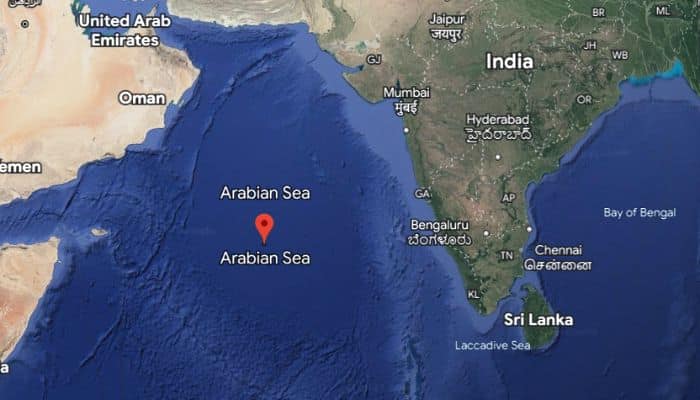

This process gave birth to the mighty Himalayan range, and the Indian Plate was subducted under the Eurasian Plate. The consequence of these tectonic activities was the formation of the Arabian Sea as a part of the Indian Ocean.
The Arabian Sea covers 3, 862,000 square kilometres of area and has a maximum depth of approximately 4,652 m. It is connected to the Red Sea through the Gulf of Aden via Bab-el-Mandeb Strait, while the Gulf of Oman links it to the Persian Gulf.
Arabian Sea’s climate is influenced by several factors, including its geographical location, winds, ocean currents and surface temperature of its waters.
It has hot and humid summers and not-so-cold winters. The surface temperature ranges from 25 to 30 degrees Celsius all year round. It becomes warm in summer.
It experiences monsoonal winds which blow from the southwestern side in summer and the northeastern direction in winter. They bring quite heavy rainfall and also rough weather, and high tides during monsoons which last from April to November.
Tropical cyclones are also common, especially during summer when the surface temperature is maximum. They bring rainfall to coastal areas and even dangerous storms.
Nonetheless, the Arabian Sea region is important from the perspective of climate research and studies involving marine ecosystems on the planet. It supports innumerable aquatic species while millions depend on its fisheries to support their livelihoods.
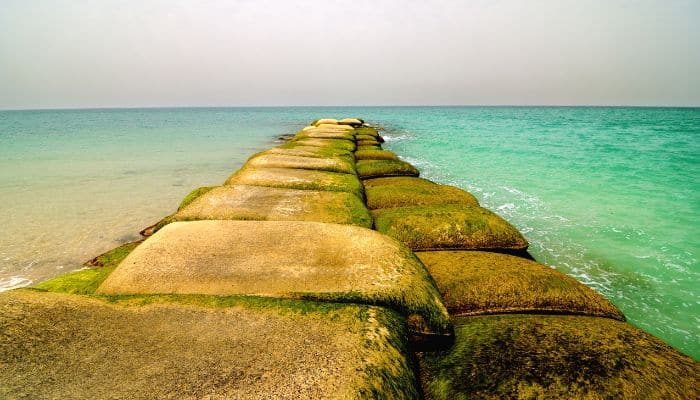

The Arabian Sea has been an important trade and cultural route since time immemorial. Hence, it has been referred to by several names in texts written by Arabian and European travellers and geographers, such as Akhzar Sea or Green Sea, Bahre Fars or Persian Sea, Hindu Sea, Makran Sea etc. It is also known as the Erythraean Sea, Sea of Oman, Indian Sea, etc. In Indian folk tradition, it is often called Sindhu Sagar, Darya and Arab Samudra.
Jawaharlal Nehru Port in Mumbai, India, is the biggest port in the Arabian Sea. It is also the biggest container port in India. It was commissioned on 26th May 1989, and in its three decades, it has changed from a bulk cargo facility to a premier container port. It is connected to more than 200 ports worldwide and ranks 26th in the world’s top 100 container ports list.
There are numerous other ports and harbours on the Arabian Sea coast as well, such as the Port of Mumbai, Kandla, Mundra Port, Pipavav port, Hazira Port, Nhava Sheva Port, New Mangalore Port, Mormugao Port, Kochi Port, Port of Karachi, Qasim Port, Gwadar Port, Chabahar Port and Port of Salalah.
The biggest island in the Arabian Sea is Socotra. It is part of a small island group comprising four islands. It lies in the western part of the sea near the Gulf of Aden, approximately 240 km east of Somalia and 380 km south of Yemen.
It is known for its rich biodiversity and unique endemic flora and fauna, which is not found anywhere else in the world. The island’s isolation and rough climate have allowed them to evolve over millions of years.
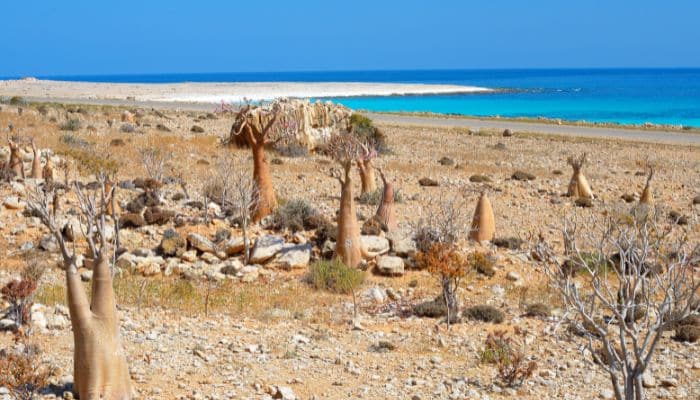

Famous species include the dragon blood tree, Socotra cormorant, starling, and cucumber tree. The island is also known for its picturesque landscapes. Beaches, cliffs, and mountains.
The island has been designated a UNESCO World Heritage Site and a famous tourist spot for ecotourists and travel enthusiasts. However, it faces the repercussions of overfishing, climate change and invasive species.
Other important islands in the Arabian Sea include the Lakshadweep islands, Masirah, Astola Island etc.
The Arab and Somali Basins of the Arabian Sea are separated by Carlsberg Ridge, a mid-ocean ridge extending from the Aden Gulf to the Laccadive Ridge.
The Arab Basin lies to the western side of the Carlsberg Ridge and is significantly deeper than the Somali Basin that lies to the eastern side of the ridge.
The latter is quite shallow, having an average depth of about 2500 m. On the other hand, the Arab Basin has an average depth of approximately 4650 m, making it one of the world’s deepest ocean basins. It has many canyons and channels created by deep-sea currents over thousand of years.
They also have different water temperatures and levels of salinity. Both basins are crucial for the region’s oil and gas reserves and fisheries.
Dead Ocean Zones are regions in the Ocean with very low oxygen levels, which makes it almost impossible for marine life to live and thrive. These oxygen minimum zones are formed naturally but are also created due to human activities like agricultural runoff and the discharge of sewage into the ocean.
They may also result from high temperatures, which lead to winds blowing in the direction of India, which ultimately brings nutrients and reduces the oxygen in the waters of the Arabian Sea. During winter, the phytoplankton that lives in low oxygen turns these regions bright green.
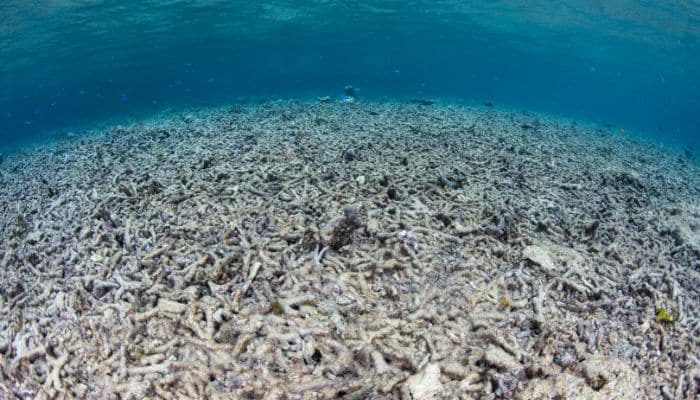

Per reports, dead zones exist in the sea’s north and central regions. A 2015 study identified a huge dead zone off the Oman Coast. It formed due to nutrient pollution and agricultural runoff.
A separate study in 2020 reported that dead zones had expanded in the Arabian Sea over the last few decades, with oxygen levels decreasing as much as 30%.
These zones impact not only marine life but also the livelihoods of coastal communities that are dependent on fishing and other activities. Scientists are trying to find ways to solve this problem.
The biggest river that drains into the Arabian Sea is the Indus. Narmada, Sabarmati and Tapi are the other rivers that flow into the water body.
Indus is one of the longest rivers in the world and flows from the Himalayas through India and then into Pakistan before it empties into the Arabian Sea.
Narmada is a major river in central India that flows westward before emptying into the Arabian Sea. Tapti drains into the Sea close to Surat city, while Sabarmati flows through India’s western state of Gujarat and into the Arabian Sea close to Ahmedabad. Mahi and Zuari rivers flow through western India and empty into the Arabian sea.
The Arabian Sea is home to many endemic species, such as the algae sargasso psis zanardinni, which is not found anywhere else in the world. The sea is also home to sharks, tuna, barracudas, mackerel, barracuda, billfish, moonfish, green turtles, hawksbill turtles and dugongs.
Whales like dolphins, humpbacks, minke whales, sperm and orca whales are also found. The Arabian Sea is home to flying fishes above the water surface in Mumbai, India. 5 different kinds of flying fish can be seen here.
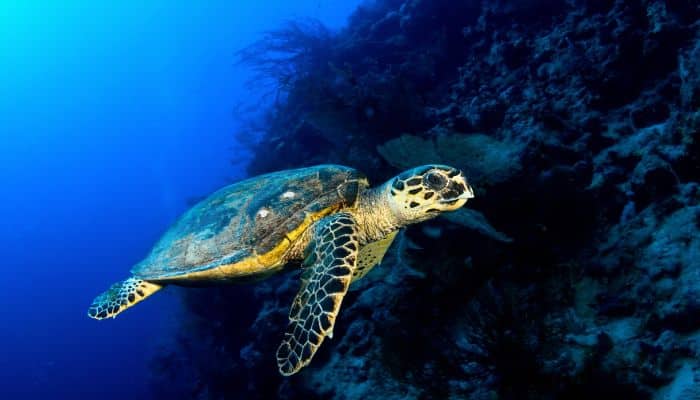

Stingrays, barnacles, fiddler crabs and jellyfish also live in the Arabian sea waters off the Mumbai coast. It is also a prominent migratory route for many seabirds like gulls, terns and pelicans.
Additionally, small-scale fishing is carried out in the sea in Africa, India’s western coast and the Arabian Peninsula. Commercial fishing operations are performed by India, Pakistan, UAE, Yemen, Maldives, Japan, South Korea etc.
Many coral reefs are found along the Arabian Sea coast, the most famous being those located off the coast of India, Yemen and Oman. They house an array of marine life, including colourful fish, crustaceans and molluscs.
Several kinds of seagrass are found in the Arabian Sea, and its coast has mangrove forests too.
One of the most popular coral reefs in the Arabian Sea is the Lakshadweep Islands, a group of 36 coral islands situated off India’s southwestern coast. Another coral reef system is the Musandam Peninsula in Oman. Situated in a marine reserve, they house 900 species of fish, turtles, dolphins etc.
Socotra Archipelago is also home to many coral reefs. They are known for their rich biodiversity. However, they are threatened by human activities like pollution, climate change and overfishing.
You might also like to read-
Disclaimer: The author’s views expressed in this article do not necessarily reflect the views of The Marine Learners. Data and charts, if used in the article, have been sourced from available information and have not been authenticated by any statutory authority. The author and The Marine Learners do not claim it to be accurate nor accept any responsibility for the same. The views constitute only the opinions and do not constitute any guidelines or recommendations on any course of action to be followed by the reader.
The article or images cannot be reproduced, copied, shared or used in any form without the permission of the author and The Marine Learners.










We believe that knowledge is power, and we’re committed to empowering our readers with the information and resources they need to succeed in the merchant navy industry.
Whether you’re looking for advice on career planning, news and analysis, or just want to connect with other aspiring merchant navy applicants, The Marine Learners is the place to be.